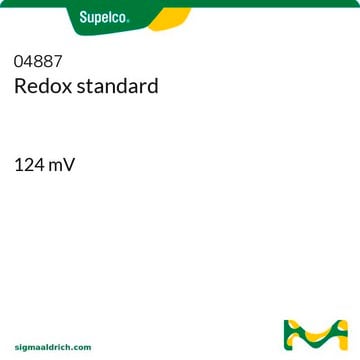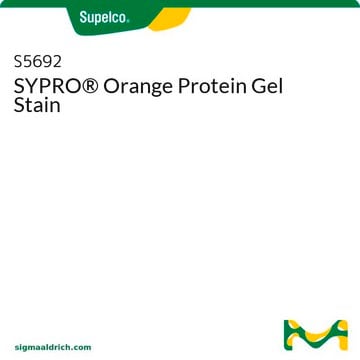10417
8-Anilino-1-naphthalenesulfonic acid ammonium salt
for fluorescence, ≥97.0% (HPLC)
Sinonimo/i:
1,8-ANS NH4, ANSA, Ammonium 8-anilino-1-naphthalenesulfonate, N-Phenyl peri acid
About This Item
Prodotti consigliati
Grado
for fluorescence
Livello qualitativo
Saggio
≥97.0% (HPLC)
Forma fisica
solid
Perdita
≤2.5% loss on drying
Punto di fusione
245-253 °C
Solubilità
H2O: 0.1 g/5mL, clear to very slightly hazy (hot)
NaOH: 1 N
H2O: soluble
acetone: soluble
methanol: soluble
Fluorescenza
λex 388 nm; λem 470 nm in 0.1 M Tris, 0.2 M KCl, pH 9.0, BSA
Stringa SMILE
N.OS(=O)(=O)c1cccc2cccc(Nc3ccccc3)c12
InChI
1S/C16H13NO3S.H3N/c18-21(19,20)15-11-5-7-12-6-4-10-14(16(12)15)17-13-8-2-1-3-9-13;/h1-11,17H,(H,18,19,20);1H3
IPBNQYLKHUNLQE-UHFFFAOYSA-N
Cerchi prodotti simili? Visita Guida al confronto tra prodotti
Applicazioni
Codice della classe di stoccaggio
11 - Combustible Solids
Classe di pericolosità dell'acqua (WGK)
WGK 3
Punto d’infiammabilità (°F)
Not applicable
Punto d’infiammabilità (°C)
Not applicable
Dispositivi di protezione individuale
dust mask type N95 (US), Eyeshields, Gloves
Certificati d'analisi (COA)
Cerca il Certificati d'analisi (COA) digitando il numero di lotto/batch corrispondente. I numeri di lotto o di batch sono stampati sull'etichetta dei prodotti dopo la parola ‘Lotto’ o ‘Batch’.
Possiedi già questo prodotto?
I documenti relativi ai prodotti acquistati recentemente sono disponibili nell’Archivio dei documenti.
I clienti hanno visto anche
Articoli
Nitric oxide (NO) as a signal transporter in neurons, endothelial cells and in the immune system.
Il team dei nostri ricercatori vanta grande esperienza in tutte le aree della ricerca quali Life Science, scienza dei materiali, sintesi chimica, cromatografia, discipline analitiche, ecc..
Contatta l'Assistenza Tecnica.











